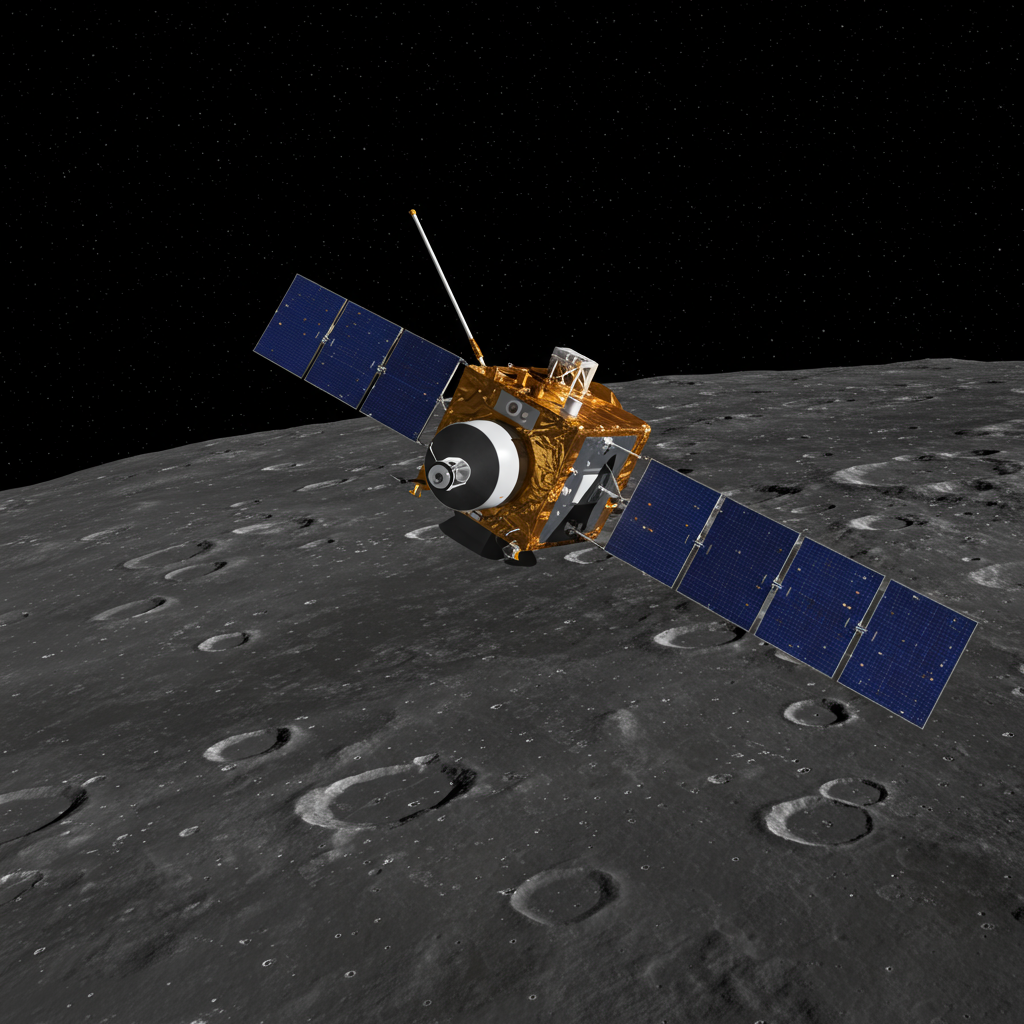Firefly Aerospace is set to introduce a pioneering commercial lunar imaging service, offering governments and companies unprecedented high-resolution views of the Moon’s surface and the space around it. Dubbed “Ocula,” this new service aims to provide critical data, potentially supplementing or even offering an alternative to existing governmental lunar reconnaissance capabilities like NASA’s aging Lunar Reconnaissance Orbiter (LRO).
The Ocula service will utilize advanced imaging instruments mounted on Firefly’s versatile Elytra spacecraft platform. Developed in partnership with Lawrence Livermore National Laboratory, the system incorporates telescopes equipped with sensitive ultraviolet and visible light sensors.
High-Resolution Lunar Views
A key feature of Ocula is its impressive imaging capability. When operating from an Elytra spacecraft in lunar orbit at an altitude of 50 kilometers, the system can capture images with a resolution of 20 centimeters per pixel. This offers a significant leap in detail compared to the 50-centimeter resolution provided by the main camera on NASA’s LRO, which has been operating since 2009.
The high-resolution imagery, particularly at UV and visible wavelengths, serves multiple crucial applications:
Mineral Identification: Detecting key minerals on the lunar surface, such as ilmenite, which is closely associated with the presence of helium-3 – a potential future energy source.
Space Domain Awareness: Tracking and identifying objects, both natural and artificial, within the cislunar space environment (the region between Earth and the Moon).
- Supporting Missions: Providing detailed reconnaissance data essential for planning future human and robotic lunar missions.
- spacenews.com
- spaceflightnow.com
- spacenews.com
- www.militaryaerospace.com
- www.nasa.gov
Addressing the Need for Modern Lunar Data
The introduction of Ocula comes at a time when the demand for detailed lunar data is growing. NASA’s LRO has performed admirably for over a decade, but the scientific community has increasingly called for enhanced or successor imaging capabilities. A 2022 study by the Lunar Exploration Analysis Group highlighted that a mission to succeed LRO was “long overdue” and recommended embracing diverse approaches, including the use of smaller spacecraft and procuring data acquisition services from commercial providers, rather than solely relying on large, government-operated satellites.
Firefly Aerospace, a prominent participant in NASA’s Commercial Lunar Payload Services (CLPS) program, is directly addressing this need. The company, alongside others in the CLPS initiative, has expressed strong interest in expanding its role beyond delivering payloads to providing valuable data services to NASA and other customers.
Deployment Plan and Firefly’s Growing Lunar Experience
Firefly plans to begin offering Ocula services with the launch of its Blue Ghost 2 lunar lander mission, currently targeting 2026. This mission will include an Elytra spacecraft operating in lunar orbit, carrying the first Ocula payload. A second Ocula system is planned for deployment on the Blue Ghost 3 lander mission, scheduled for 2028. Additionally, an Ocula payload will be part of the Elytra 3 vehicle used in a Department of Defense (DIU) project focused on responsive space domain awareness around 2027.
This initiative builds directly on Firefly’s increasing experience in lunar operations. The company successfully landed its Blue Ghost Mission 1 on the Moon’s near side in March 2025, becoming the latest commercial entity to achieve a lunar touchdown under the CLPS program. The Blue Ghost 1 mission successfully delivered a suite of 10 NASA science and technology payloads designed to study various aspects of the lunar environment, including subsurface thermal properties, regolith characteristics, dust mitigation, navigation capabilities, and space weather impacts. This recent success underscores Firefly’s capability to execute complex lunar missions and positions Ocula as a natural expansion into data services.
Firefly CEO Jason Kim emphasized that Ocula is poised to be among the first commercial lunar imaging services on the market, stating it will provide “critical data that informs future human and robotic missions and supports national security with intelligence, surveillance, and reconnaissance.”
Future Vision for Ocula
While initial services will leverage the Ocula payloads on the Blue Ghost missions, Firefly envisions evolving Ocula into a constellation of lunar orbiters. This constellation approach would significantly increase the revisit rate over specific lunar areas, providing customers with more timely and dynamic data.
The versatile Elytra platform itself is designed for complex dynamic space operations, with potential applications extending beyond lunar orbit, including possible roles in future Mars exploration missions for imaging or communication support.
Firefly has indicated that imagery from the initial Ocula missions will be offered “at low cost” to government and commercial customers, though specific pricing details have not yet been released. The development of Ocula highlights a growing trend in the commercial space sector to provide essential infrastructure and data services in cislunar space, supporting both scientific discovery and expanded commercial and governmental activities on and around the Moon.




